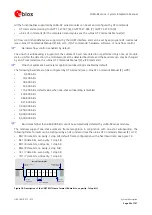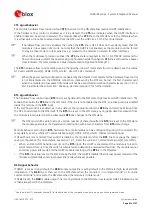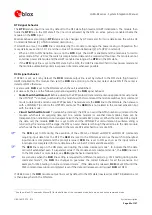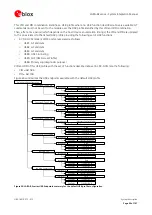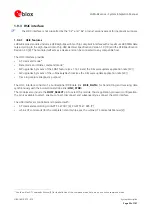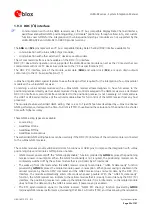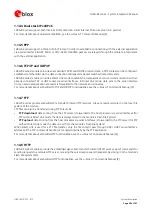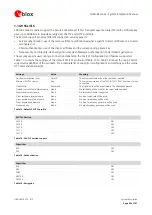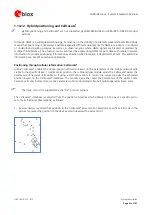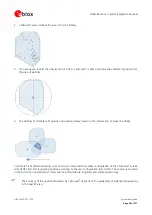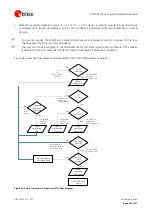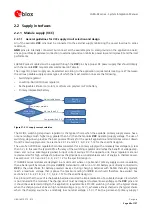
LARA-R2 series - System Integration Manual
UBX-16010573 - R12
System description
Page 53 of 157
1.9.4
DDC (I
2
C) interface
Communication with u-blox GNSS receivers over the I
2
C bus compatible Display Data Channel interface,
AssistNow embedded GNSS positioning aiding, CellLocate
®
positioning through cellular info, and custom
functions over GPIOs for the integration with u-blox positioning chips / modules are not supported by the
LARA-R204-02B and LARA-R211-02B-00 product versions.
The
SDA
and
SCL
pins represent an I
2
C bus compatible Display Data Channel (DDC) interface available for
communication with u-blox GNSS chips / modules,
communication with other external I
2
C devices as audio codecs.
The AT command interface is not available on the DDC (I
2
C) interface.
DDC (I
2
C) slave-mode operation is not supported: the LARA-R2 series module can act as the I
2
C master that can
communicate with more I
2
C slaves in accordance to the
I
2
C bus specifications
The DDC (I
2
C) interface pins of the module, serial data (
SDA
) and serial clock (
SCL
), are open drain outputs
conforming to the
I
2
C bus specifications
u-blox has implemented special features to ease the design effort required for the integration of a u-blox cellular
module with a u-blox GNSS receiver.
Combining a u-blox cellular module with a u-blox GNSS receiver allows designers to have full access to the
positioning receiver directly via the cellular module: it relays control messages to the GNSS receiver via a dedicated
DDC (I
2
C) interface. A second interface connected to the positioning receiver is not necessary: AT commands via
the UART or USB serial interface of the cellular module allow for full control of the GNSS receiver from any host
processor.
The modules feature embedded GNSS aiding, that is, a set of specific features developed by u-blox to enhance
GNSS performance, decreasing the Time-To-First-Fix (TTFF), thus allowing the calculation of the position in a shorter
time with higher accuracy.
These GNSS aiding types are available:
Local aiding
AssistNow Online
AssistNow Offline
AssistNow Autonomous
The embedded GNSS aiding features can be used only if the DDC (I
2
C) interface of the cellular module is connected
to the u-blox GNSS receivers.
The cellular modules provide additional custom functions over GPIO pins to improve the integration with u-blox
positioning chips and modules. GPIO pins can handle:
GNSS receiver power-on/off: the “GNSS supply enable” function provided by
GPIO2
improves the positioning
receiver power consumption. When the GNSS functionality is not required, the positioning receiver can be
completely switched off by the cellular module that is controlled by AT commands.
The wake-up from idle mode when the GNSS receiver is ready to send data: “GNSS Tx data ready” function
provided by
GPIO3
improves the cellular module power consumption. When power saving is enabled in the
cellular module by the AT+UPSV command and the GNSS receiver does not send data by the DDC (I
2
C)
interface, the module automatically enters idle mode whenever possible. With the “GNSS Tx data ready”
function, the GNSS receiver can indicate to the cellular module that it is ready to send data by the DDC (I
2
C)
interface: the positioning receiver can wake up the cellular module if it is in idle mode, so the cellular module
does not lose the data sent by the GNSS receiver even if power saving is enabled.
The RTC synchronization signal to the GNSS receiver: “GNSS RTC sharing” function provided by
GPIO4
improves GNSS receiver performance, decreasing the Time-To-First-Fix (TTFF), and thus allowing the calculation

